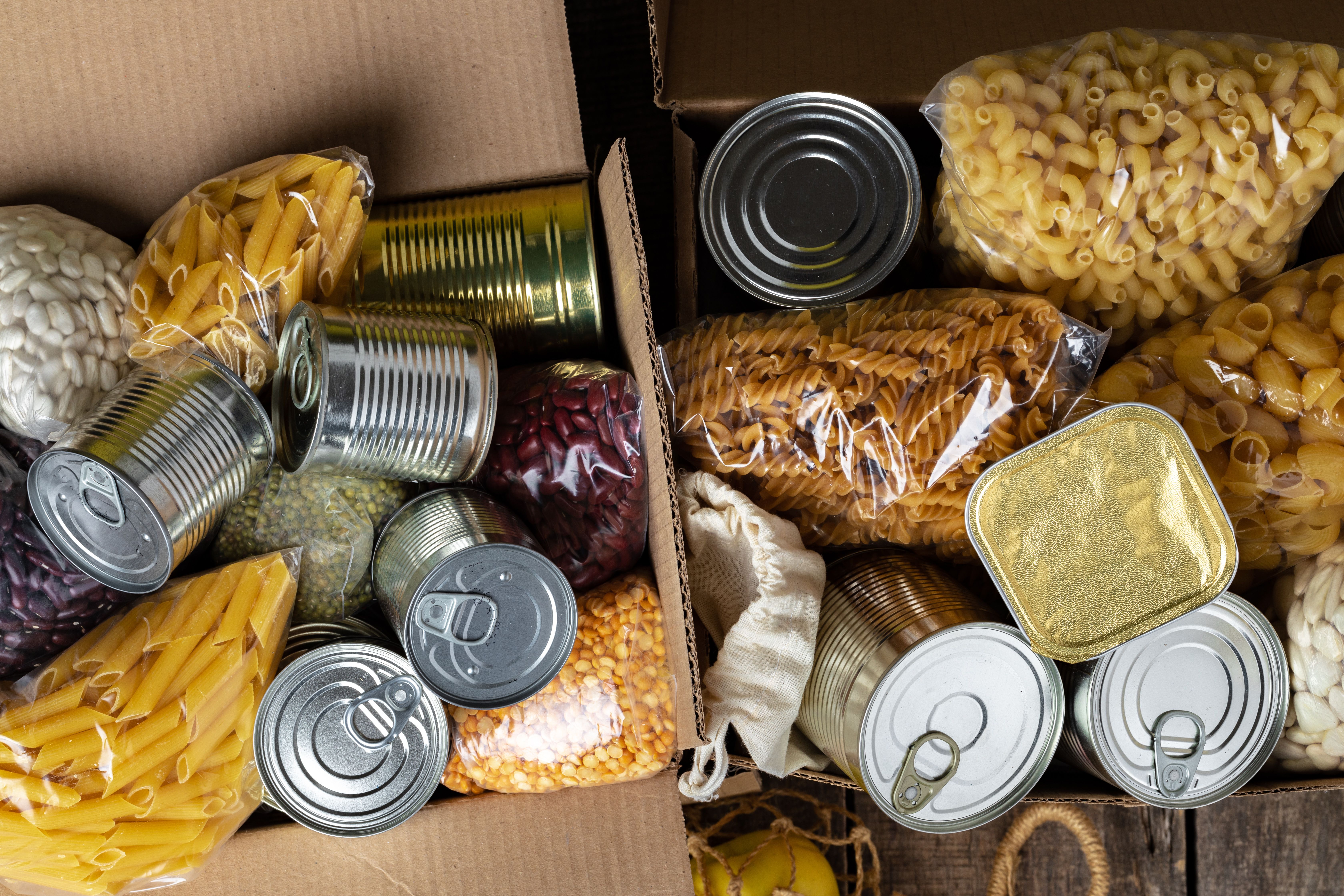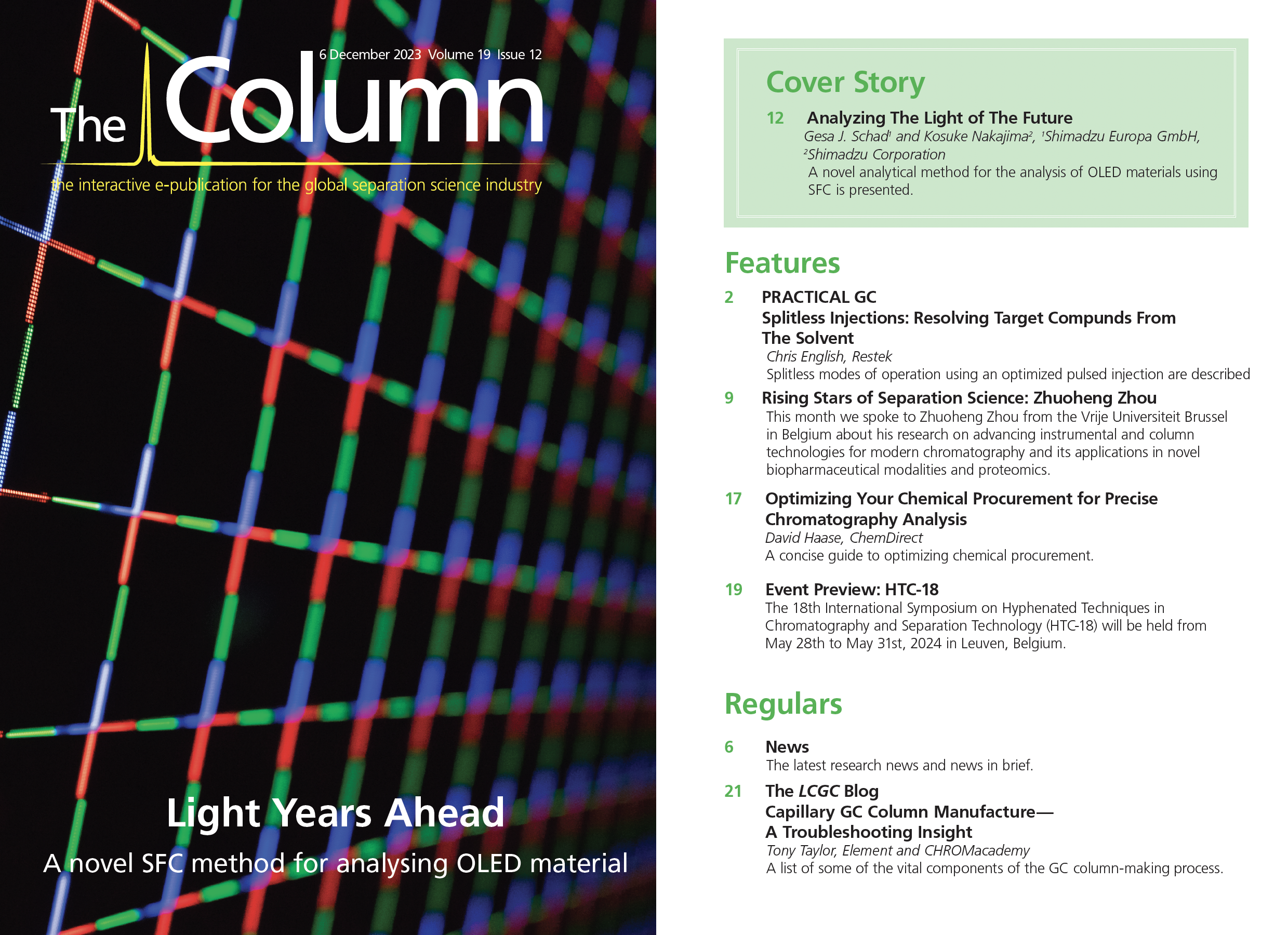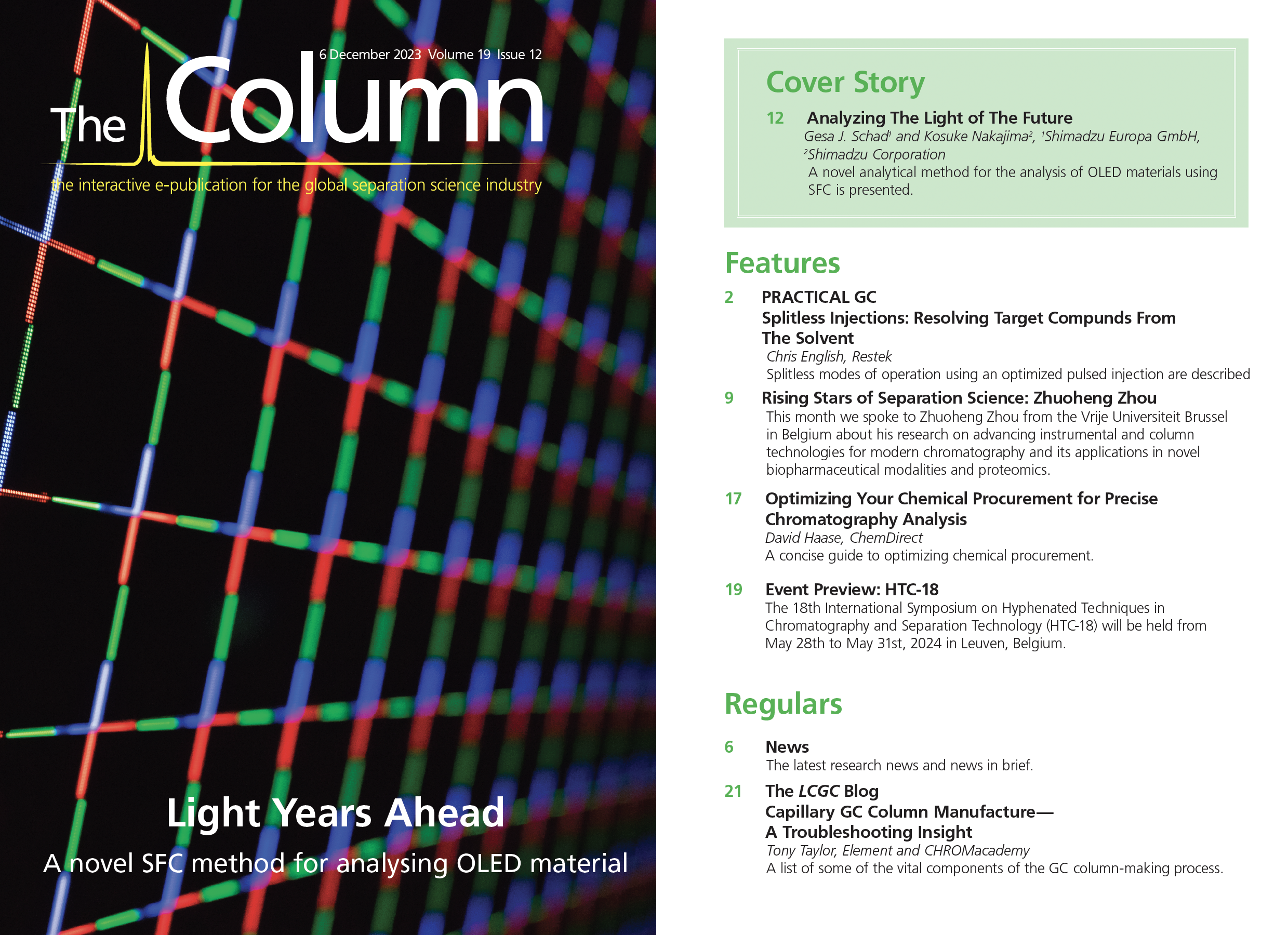FDA Talks to LCGC About Chromatographic Techniques for PFAS Detection in Food Supply
A new study in Analytical & Bioanalytical Chemistry details the US Food and Drug Administration (FDA)’s recent expansion to 30 analytes, from a previous 16, in the method for determining per- and polyfluoroalkyl substances (PFAS) in the US food supply, which, in turn, may mean that additional analytes may still yet be identified (1). The FDA’s action was preceded by a March 2022 guidance document from the European Union Reference Laboratory for Halogenated Persistent Organic Pollutants in Feed and Food (EURL POPs) defining method parameters for finding priority PFAS of interest, as well as limits of quantification (LOQs). LCGC reached out to the FDA for further comment on this study, and the agency’s responses are presented here in a question-and-answer format. Some minor edits for clarity may have been made.
Food donations on the table. Text Donation. Close up. | Image Credit: © fotofabrika - stock.adobe.com

Q: The study explains the reasoning behind some of the choices made for which samples to use (such as chocolate milk vs. regular milk). Can you provide some insight into why some of the other foods were chosen?
A: The matrices were chosen to represent different food categories. Lettuce and blueberries represent fruits and vegetables, milk and eggs for dairy, salmon and clams for meat and seafood, and bread for grains. For agricultural samples, corn snaplage and corn silage were chosen based on experience with these being challenging matrices.
Q: What is the working relationship between EURL POPs and the FDA (and, presumably, similar agencies in other parts of the world) when it comes to PFAS? That is to say, do these different agencies check and balance each other to attempt to set global standards for LOQs?
A: The Association of Official Analytical Chemists (AOAC) is an international organization that brings together government, industry, and academia to establish standard methods of analysis. They also develop standard method performance requirements (SMPRs), which describe the minimum recommended performance characteristics to be used during the evaluation of a method. During 2023, a SMPR for PFAS in produce, beverages, dairy products, egg, seafood, meat products, and feed was developed that defines method performance requirements and required limits of quantification. The working group for this SMPR
was chaired by the FDA and included members who are experts in PFAS analysis from a variety of sectors and countries. Standards for LOQs were set during this process.
Q: Among the techniques mentioned in this study are solid-phase extraction (SPE), liquid chromatography (LC), and mass spectrometry (MS). Can you explain the significance and importance of chromatographic techniques in your research?
A: Due to a large number of potential matrix interferences in food and feed, SPE was essential to be able to remove co-eluting interferences. Additionally, the use of a longer column (in this case 150 mm) was necessary to improve the resolution of matrix interferences from target analytes and prevent detection of false positives.
Q: It seems that there is much still to be learnt about quantification levels for hundreds, perhaps thousands, of PFAS, although several key ones are closely monitored. Is that accurate?
A: Currently the FDA method focuses on legacy PFAS that have been identified as stable end products in the environment, such as long-chain perfluorosulfonic acids (PFSAs), and long-chain perfluoroalkyl carboxylic acids (PFCAs) that have the potential to uptake into food, and emerging PFAS in which analytical standards are available. There are still a lot of unknowns about the number of PFAS present in the environment, their physical chemical properties, toxicity, and ability to transport into food. The FDA continues to develop methods, including those using high-resolution mass spectrometry (HRMS), to gain a better understanding of additional PFAS that may be present in food.
Reference
(1) Genualdi, S.; Young, W.; Peprah, E.; et al. Analyte and Matrix Method Extension of Per- and Polyfluoroalkyl Substances in Food and Feed. Anal. Bioanal. Chem. 2023. DOI: 10.1007/s00216-023-04833-1

New Study Reviews Chromatography Methods for Flavonoid Analysis
April 21st 2025Flavonoids are widely used metabolites that carry out various functions in different industries, such as food and cosmetics. Detecting, separating, and quantifying them in fruit species can be a complicated process.
Analytical Challenges in Measuring Migration from Food Contact Materials
November 2nd 2015Food contact materials contain low molecular weight additives and processing aids which can migrate into foods leading to trace levels of contamination. Food safety is ensured through regulations, comprising compositional controls and migration limits, which present a significant analytical challenge to the food industry to ensure compliance and demonstrate due diligence. Of the various analytical approaches, LC-MS/MS has proved to be an essential tool in monitoring migration of target compounds into foods, and more sophisticated approaches such as LC-high resolution MS (Orbitrap) are being increasingly used for untargeted analysis to monitor non-intentionally added substances. This podcast will provide an overview to this area, illustrated with various applications showing current approaches being employed.

.png&w=3840&q=75)

.png&w=3840&q=75)



.png&w=3840&q=75)



.png&w=3840&q=75)











